Visit The Pakke Tiger Reserve Known For Its Rich Flora And Fauna

Nestled in the lush landscapes of Arunachal Pradesh, India, the Pakke Tiger Reserve stands as a testament to nature’s untamed beauty. This biodiverse haven, spanning over 860 square kilometres, is a vital sanctuary for the endangered Bengal tiger and countless other species. With its pristine rivers, dense subtropical forests, and rugged terrain, Pakke offers a glimpse into the wilderness. This reserve is a naturalist’s paradise home to over 2,000 plant species and a rich array of fauna, including elephants, leopards, and hornbills. Read this blog to learn more about the Pakke Tiger Reserve.
About Pakke Tiger Reserve
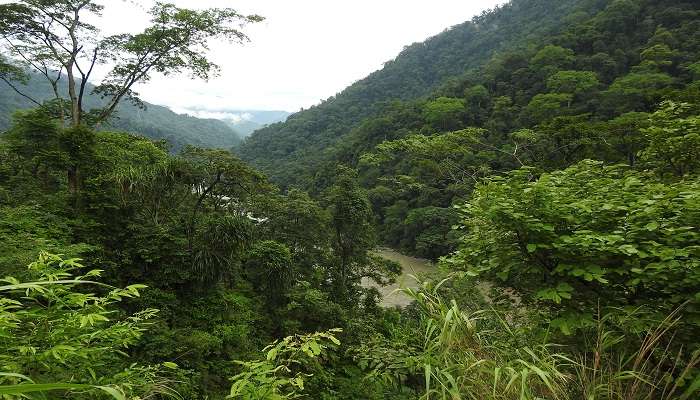
The Pakke Tiger Reserve, located in the East Kameng district of Arunachal Pradesh, India, covers an area of 862 square kilometres (333 square miles). It is part of the Project Tiger Reserve, which is managed and protected by the Department of Environment and Forest of Arunachal Pradesh. Formerly known as the Pakhui Tiger Reserve, the Governor of Arunachal Pradesh renamed it in April 2001.
This place has done something really special. In 2016, it won a big award called the India Biodiversity Award. It got this award in the ‘Conservation of threatened species’ category. Why? Because of its Hornbill Nest Adoption Programme. This programme is all about keeping the hornbill birds safe and making sure they continue to live in the reserve. This shows how much the place cares about keeping all kinds of life safe and thriving in the area. It’s their way of saying, “We love and protect nature here”.
Must Read: Wildlife Sanctuaries In Arunachal Pradesh
Flora At Pakke Tiger Reserve
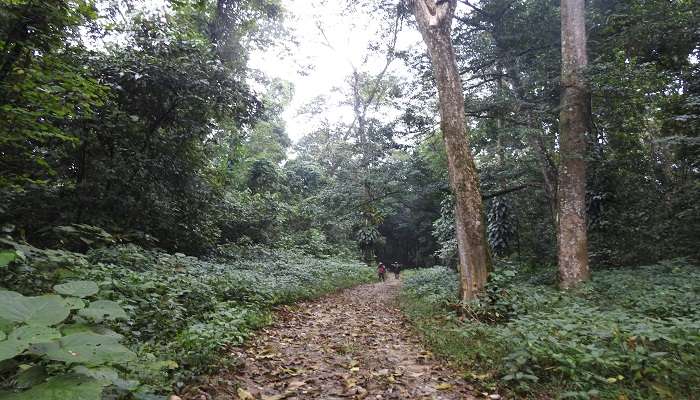
Pakke Tiger Reserve features diverse habitats, including lowland semi-evergreen, evergreen, and Eastern Himalayan broadleaf forests. It hosts about 343 recorded woody flowering plant species, primarily from the Euphorbiaceae and Lauraceae families. An estimated 1,500 vascular plant species, including around 500 woody species, are also expected. The reserve’s vegetation is characterised by a multi-layered structure, dominated by emergent species such as Bhelu (Tetrameles Nudiflora), Borpat (Ailanthus Grandis), and Jutuli (Altingia Excelsa). The primary vegetation type is classified as Assam Valley tropical semi-evergreen forest, rich in epiphytes and woody lianas, with dense growth.
Lower plains and foothills contain tropical semi-evergreen forests featuring Kari (Polyalthia Simiarum) and Hatipehala (Pterospermum Acerifolium). Higher elevations transition to subtropical broadleaved forests dominated by Fagaceae and Lauraceae. Moist areas support various bamboo and cane species with significant local economic uses. Overall, about 64% of tree species in the reserve are animal-dispersed, highlighting the ecological significance of its flora.
Fauna At Pakke Tiger Reserve
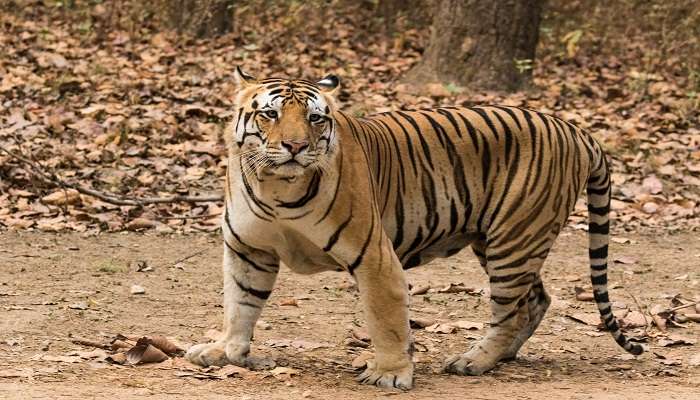
The reserve is home to at least 40 mammal species, including iconic large cats such as the Bengal tiger, Indian leopard, and clouded leopard. Other notable species include wild dogs, Asiatic jackals, elephants, gaur, sambar, barking deer, and monkeys like the Rhesus macaque, Assamese macaque, and capped langur. It also hosts diverse viverrids, weasels, mongooses, and the yellow-throated marten. The reserve also boasts over 296 recorded species. Pakke Tiger Reserve is a birdwatcher’s paradise. It is notable for endangered species like the white-winged wood duck, unique birds like the ibisbill, and hornbills like the wreathed and great hornbill. Other species include Jerdon’s baza, pied falconet, forest eagle owl, and a variety of colourful broadbills, pittas, and sunbirds.
You can also find 500 butterfly species. The reserve supports a diverse reptile and amphibian community, with 36 reptile species and 30 amphibian species documented. Notable species include the endangered Assam roofed turtle and the impressive king cobra, like the pied warty frog. Overall, Pakke Tiger Reserve’s diverse fauna highlights its importance as a biodiversity hotspot in Northeast India, attracting researchers and wildlife enthusiasts alike.
Suggested Read: Bird Sanctuary In Arunachal Pradesh
Opening Hours, Entry Fees, and Best Time to Visit
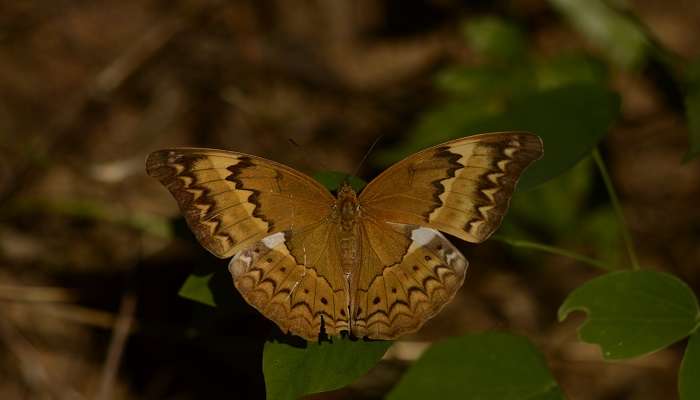
Pakke Tiger Reserve, also known as Pakhui Wildlife Sanctuary, is in Arunachal Pradesh, India. The sanctuary is open daily from 8:00 AM to 6:00 PM, including public holidays. While entry is free, there may be extra charges for vehicle access and camera use. The best time to visit Pakke Tiger Reserve is during the winter, from November to March, when the weather is pleasant enough to explore. A particularly special time to visit is during the Nyokum Yullo, the harvest festival of the Nyishi Tribe.
This festival offers visitors a unique opportunity to experience the vibrant culture and simple lifestyles of the local community living around the park. This combination of favourable weather and cultural immersion makes winter an ideal season for a visit.
What Are The Best Ways To Reach?

Pakke Tiger Reserve can be accessed from multiple means of transportation, making it convenient for travellers. Below are the best ways to reach the reserve:
By Road: Pakke Tiger Reserve can be reached through several towns. Seijosa, located east, is connected to Guwahati (234 km away) and Tezpur (64 km away). Daily bus services operate from Tezpur to Seijosa, provided by Arunachal Pradesh State Transport (APST) and private operators (except Thursdays). Visitors can hire cabs from Tezpur and Bhalukpong for more direct access.
By Air: The nearest airport to Pakke Tiger Reserve is Tezpur Airport, which is well-connected to major cities. Travellers can fly to Tezpur and then take a cab or bus to reach the reserve, making it a convenient option for those far away.
By Train: The closest railway station is in Guwahati, approximately 234 Km from the reserve. From Guwahati, travellers can easily reach Pakke Tiger Reserve by bus or cab, ensuring a straightforward journey from the railway network.
Suggested Read: Honeymoon In Arunachal Pradesh
Things To Keep In Mind
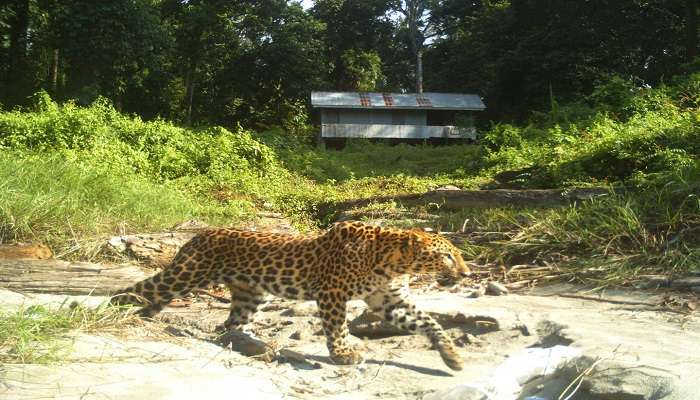
Visiting Pakke Tiger Reserve can be an incredible experience, offering a chance to explore rich biodiversity and pristine natural beauty. To ensure a safe and enjoyable visit, keep the following tips in mind:
- The sanctuary is best explored from October to March, when the climate is most conducive to exploring the reserve.
- Opt for a rented jeep or 4WD to journey into the heart of the reserve. This mode of transport enables a comprehensive exploration of the reserve.
- Securing the Forest Department’s prior approval is crucial to accessing the reserve’s core area. Plan this ahead of time to prevent any hassles.
- The reserve is a habitat for diverse species, such as tigers, leopards, elephants, bears, and bird species. Respect their homes and keep a safe distance.
- The reserve is safeguarded by well-informed and supportive staff. Adhering to their instructions and guidelines is vital for safety and wildlife preservation.
Further Read: Eaglenest Wildlife Sanctuary
Pakke Tiger Reserve is a testament to Arunachal Pradesh’s rich biodiversity and conservation efforts. Its lush forests, diverse wildlife, and stunning landscapes offer an unforgettable experience for nature enthusiasts and adventure seekers; visiting the reserve is a peaceful experience. You’ll understand how important it is to protect our natural world and keep the balance of ecosystems. Are you excited to see the Pakke Tiger Reserve? Plan your trip to Arunachal Pradesh now and get ready to be amazed by this special place. You can look forward to exciting experiences with wildlife and peaceful walks in the forest.
For our editorial codes of conduct and copyright disclaimer, please click here.
Cover Image Credit: Ms Sarah Welch for wikimedia commons
Frequently Asked Questions About Pakke Tiger Reserve
What is Pakke Tiger Reserve famous for?
Pakke Tiger Reserve is renowned for its rich biodiversity and significant conservation efforts. In 2016, it received the India Biodiversity Award for its Hornbill Nest Adoption Programme, which helps protect endangered hornbill species and their habitats.
On which river is the Pakke Tiger Reserve situated?
Pakke Tiger Reserve is bordered by the Bhareli or Kameng River to the west and north, while the Pakke River forms its eastern boundary. These rivers contribute to the reserve's lush ecosystem and wildlife habitats.
In which district is Pakke Tiger Reserve located?
Pakke Tiger Reserve is in the East Kameng district of Arunachal Pradesh, Northeast India. This region is known for its scenic beauty and diverse wildlife, making it an essential area for conservation.
In which district is Pakke Tiger Reserve located?
Pakke Tiger Reserve is in the East Kameng district of Arunachal Pradesh, Northeast India. This region is known for its scenic beauty and diverse wildlife, making it an essential area for conservation.
What animals are in the Pakke Tiger Reserve?
Pakke Tiger Reserve is home to over 40 mammal species, including three large cats: Bengal tiger, Indian leopard, and clouded leopard. Other notable species include wild dogs, Asiatic jackals, elephants, barking deer, gaurs, and sambars.
Which is the nearest airport to Pakke Tiger Reserve?
The nearest airports to Pakke Tiger Reserve include Tezpur Airport (64 km away), Itanagar Airport (130 km away), and Guwahati Airport (240 km away). These airports provide convenient access for visitors travelling to the reserve.
People Also Read:
National Parks In India Periyar National Park Eravikulam National Park

With a passion for exploring and travelling to the roads long forgotten, experience the world through enthralling stories and adventures. Join me as I share my experiences at some of the world’s most popular tourist destinations and quench that pestering curiosity with something exciting!











